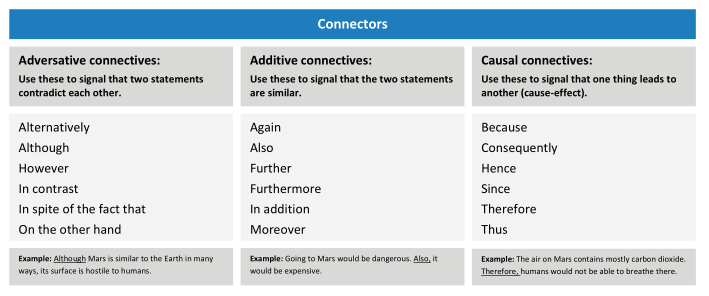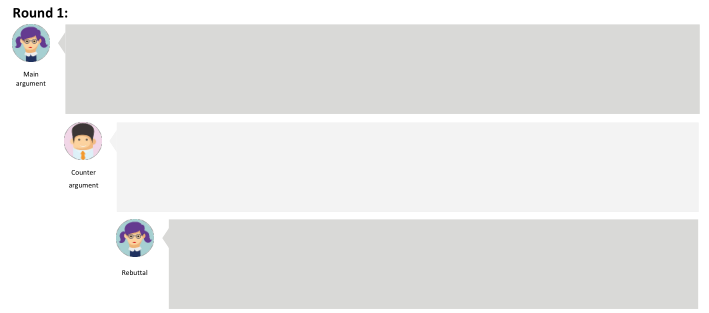Argumentative Writing is Hard
Creating and responding to cogent arguments requires that students take a position and that they understand the limitations of their own perspective. An accumulation of research on this topic has demonstrated that it is difficult for secondary students to consider multiple perspectives simultaneously while navigating complex topics in classroom debate or while producing argumentative writing.
Recently, researchers (Taylor, Lawrence, Connor & Snow, 2018) examined the cognitive and linguistic features of 40 middle school students’ argumentative writing to try and better understand how their reasoning skills develop. Students were asked to take a position on a social issue, such as the use of nuclear power or whether the death penalty is justifiable. Researchers then coded each clause in students’ essays for the type of arguments and the number of connectives they used.
Connectives: An Important Class of Academic Words
Connectives are a kind of general academic word that helps to connect ideas. For instance, adversative connectives signal that two statements contradict each other (alternatively, although). Additive connectives are used to signal that two statements are similar (again, further). Causal connectives signal that one thing leads to another (hence, since). Researchers found a connection between students’ use of these words and the level of their argumentation. These results suggest that if we want students to do advanced argumentative thinking, they need specialized words to do so.
Developing and Supporting Arguments
Reading Ways has created two graphic organizers that provide both conceptual and linguistic support for students’ argumentative writing (in collaboration with the Understanding Teachers as Designers project at the University of Oslo).
Graphic Organizer #1: Argumentative Sheet
In the first section of this organizer, students develop their own arguments and consider counter-arguments. In the next section, they consider opposing arguments and prepare rebuttals.

On the second page, students respond in writing. They’re given a list of connectives at the top of the page so that they might more easily access them for use in their argumentative writing.

Graphic Organizer #2: Rebuttal Battle Sheet
The second organizer is focused on preparing students for a classroom debate where they test their critical thinking skills with one another. The Rebuttal Battle Sheet helps students consider their side of the issue, the opposing side of the issue, and rebuttals that each side might make. Icons help students keep track of positions, arguments, and rebuttals.


